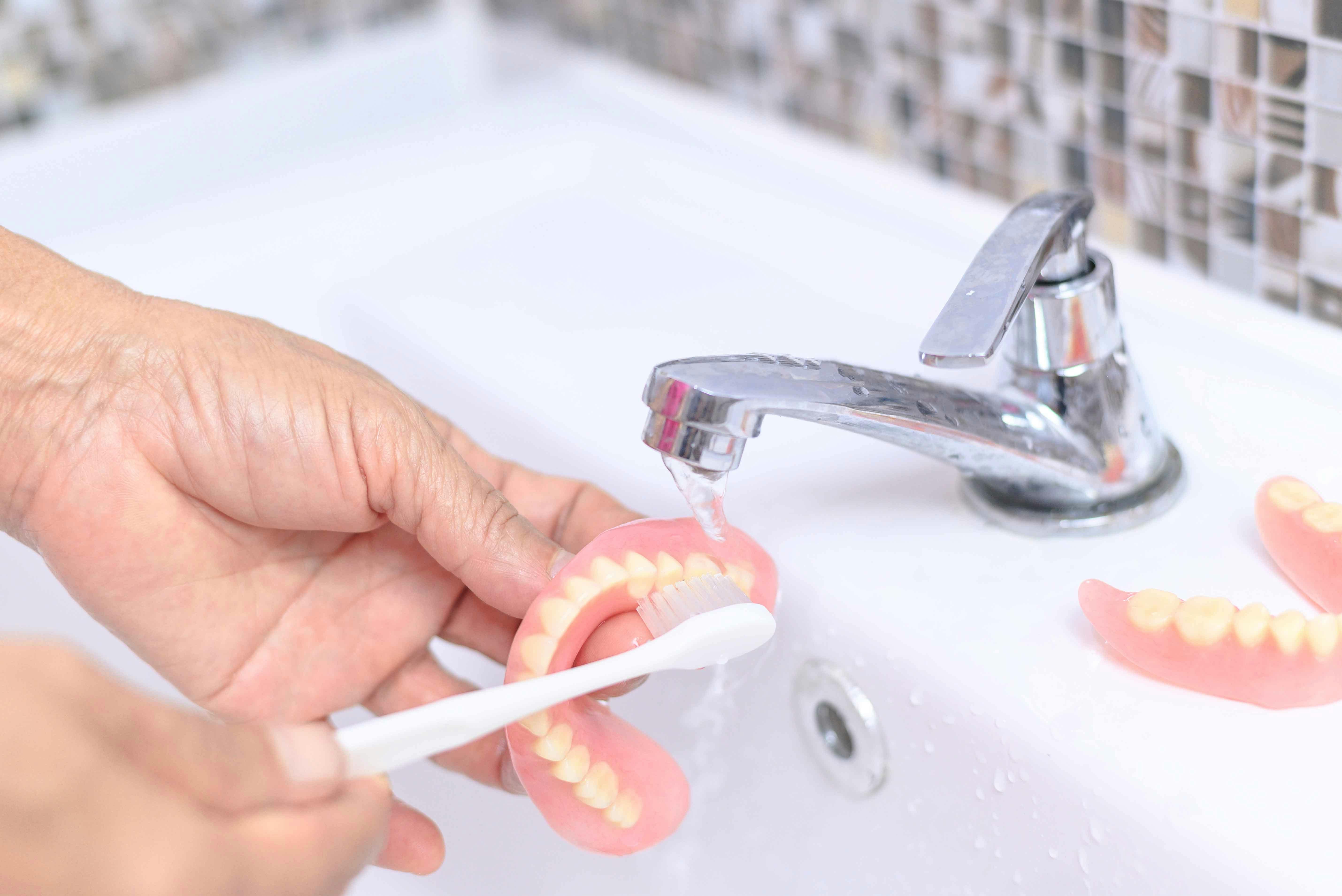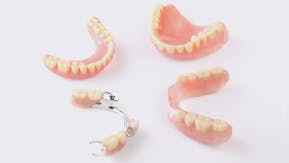How to Remove Denture Adhesive
Denture adhesives, sometimes called denture adherents, come in many forms: creams, powders, wafers and strips.1 Just as you need to clean your teeth daily, you also need to clean your dentures daily to remove food particles and the adhesive left over from your denture.1 Learn how to thoroughly remove different types of leftover denture adhesive by gently scrubbing the denture and your gums.1
Removing Different Denture Adhesives Step by Step
Up until recently, denture wearers faced an array of conflicting information on how to best apply and remove denture adhesives. This posed a huge problem because using denture adhesives correctly can improve quality of life and misusing them may cause consequences. The inconsistent information is partially due to the variety of denture adhesive products on the market.2
Before doing anything you read on the internet, follow the manufacturer’s instructions on your adhesive’s packaging about removal. Different brands and types of denture adhesives require different processes, and one blanket guide may not apply to what’s best for you specifically. The following advice is based Oral Healthcare Foundation’s Denture Care Guidelines.3
How to Remove Cream Adhesives
Here’s how to remove cream adhesives from your denture:3
- Swish mouth with warm water.
- Slowly remove denture using a rocking motion.
- Remove adhesive residue from denture and mouth with warm water & soft brush.
- Use a cleaner, such as Polident, to thoroughly clean your denture and then rinse with water.
Here’s how to remove cream adhesive from your denture:3
- Use warm water, toothpaste and a soft bristled brush to remove adhesive from your gums, palate, tongue and roof of your mouth.
- Make sure you remove all the adhesive residue.
How to Remove Strip Adhesives
Here’s how to remove strip adhesives from your denture:3
- Swish mouth with water.
- Slowly remove denture using a rocking motion.
- Remove adhesive residue from denture with a soft, moist cloth.
- Use a cleanser to thoroughly clean your denture.
Here’s how to remove strip adhesive from your mouth:3
- Use a clean damp cloth to gently remove the adhesive residue from your mouth.
- Make sure you remove all the adhesive residue.
How to Remove Powder Adhesives
Here’s how to remove powder adhesives from your denture:3
- Swish mouth with water.
- Slowly remove denture using a rocking motion.
- Remove adhesive residue from denture with a soft, moist cloth.
- Use a cleanser to thoroughly clean your denture.
Here’s how to remove strip adhesive from your mouth:3
- Use a clean damp cloth to gently remove the adhesive residue from your mouth.
- Make sure you remove all the adhesive residue.
As always, check with your dentist for customized, expert guidelines based on your specific oral health needs.3
What You Need to Know About Denture Adhesives
Denture adhesives help form a seal between your denture and gums to stabilize the denture and keep food particles from contaminating that space..1,3 Denture adhesives can also ease several denture issues such as denture retention, bite force and chewing comfort for denture wearers.1,3 They can come in the form of creams, powders, wafers or strips.3
Despite their benefits and wide-spread use, many dentists do not recommend denture adhesives in daily practice because of a stereotype that using denture adhesives means the denture was not properly fitted.3 In many cases, a properly fitted denture should only require a film of saliva to hold the denture in place against your gums.3 If a denture is too loose or causes you discomfort, it may need to be realigned or replaced. Dentists may recommend denture adhesives as a temporary solution while they develop a new denture for you. Dentists frequently recommend adhesives when a patient suffers dry mouth or xerostomia and cannot naturally produce enough saliva to seal or secure the denture to their gums.1
Some dental adhesives contain zinc, and while small amounts of this mineral is important for good health, it can contribute to harmful side effects if overused.3 If possible, avoid denture adhesives containing zinc, and just use a small amount of the product as directed. If you are experiencing any unusual symptoms, contact your physician.
What You Need to Know About Denture Cleansers
Dentures should be cleaned daily and thoroughly to remove food particles, reduce bacterial growth and prevent permanent staining.1 First, you should rinse away loose food and remove denture adhesive, and after this step, use a commercial dental cleanser to reduce the bacterial load on your denture.1 Always follow the manufacturer’s directions found on the package.
Some dental cleansers come in the form of tablets, creams, pastes, gels and solutions. Each type of cleanser comes with different instructions on how long to soak your denture in the solution. Do not use denture cleaners while the denture is in your mouth. Cleanse the denture after you take it out of your mouth and rinse the cleanser thoroughly from it before you put it backin.1 Again, always follow the manufacturer’s directions found on the package.
Choosing the Right Denture Adhesive or Cleanser
If your dentures stop fitting well or if they become damaged, contact your dentist for product recommendations, You should also contact your dentist if you want more confidence going about your day with your denture in your mouth.4
Did you know you can get some of your denture products at a discount through Altogether Dental? Sign up to be a member and save up to $15 each month on dental products.






